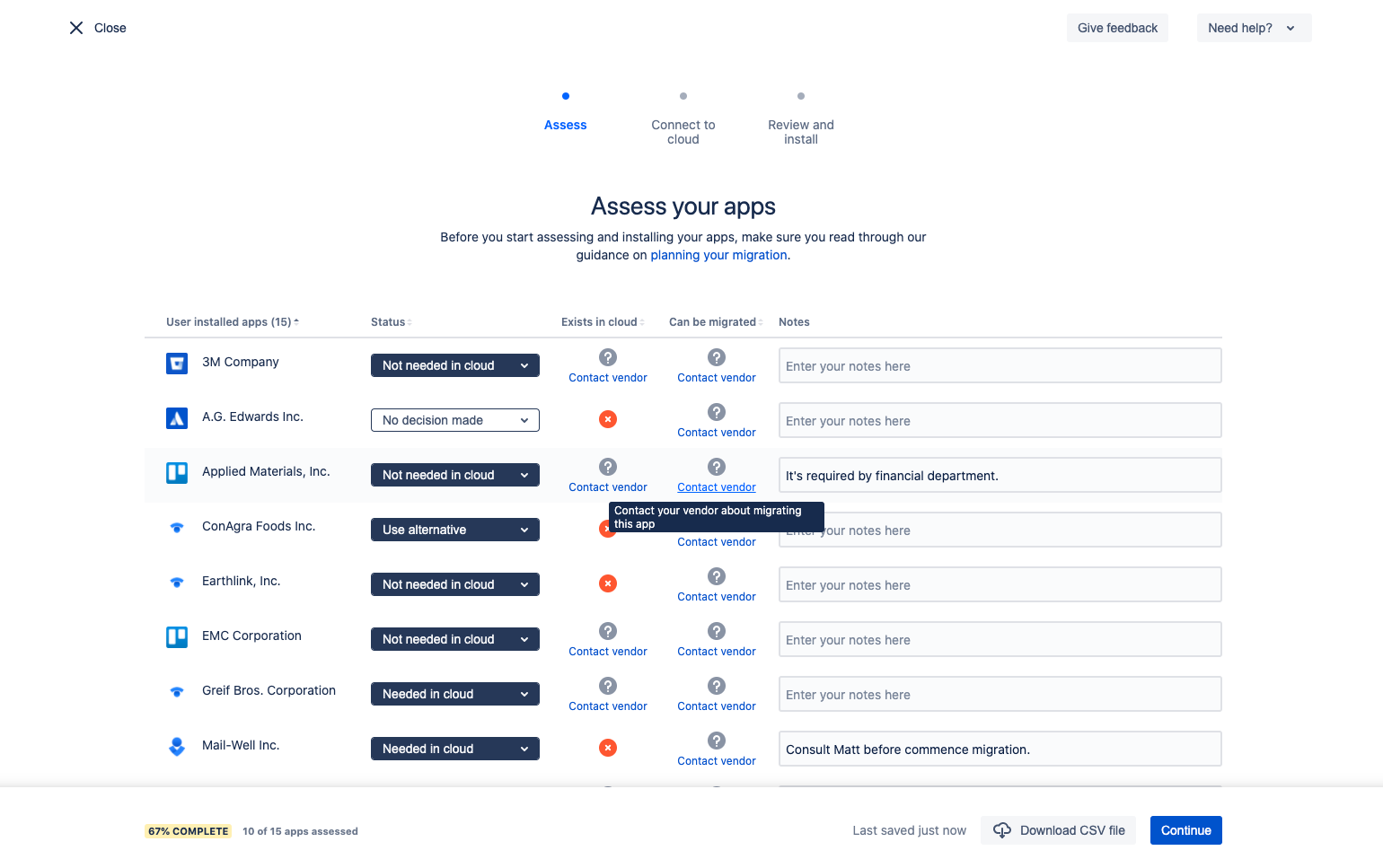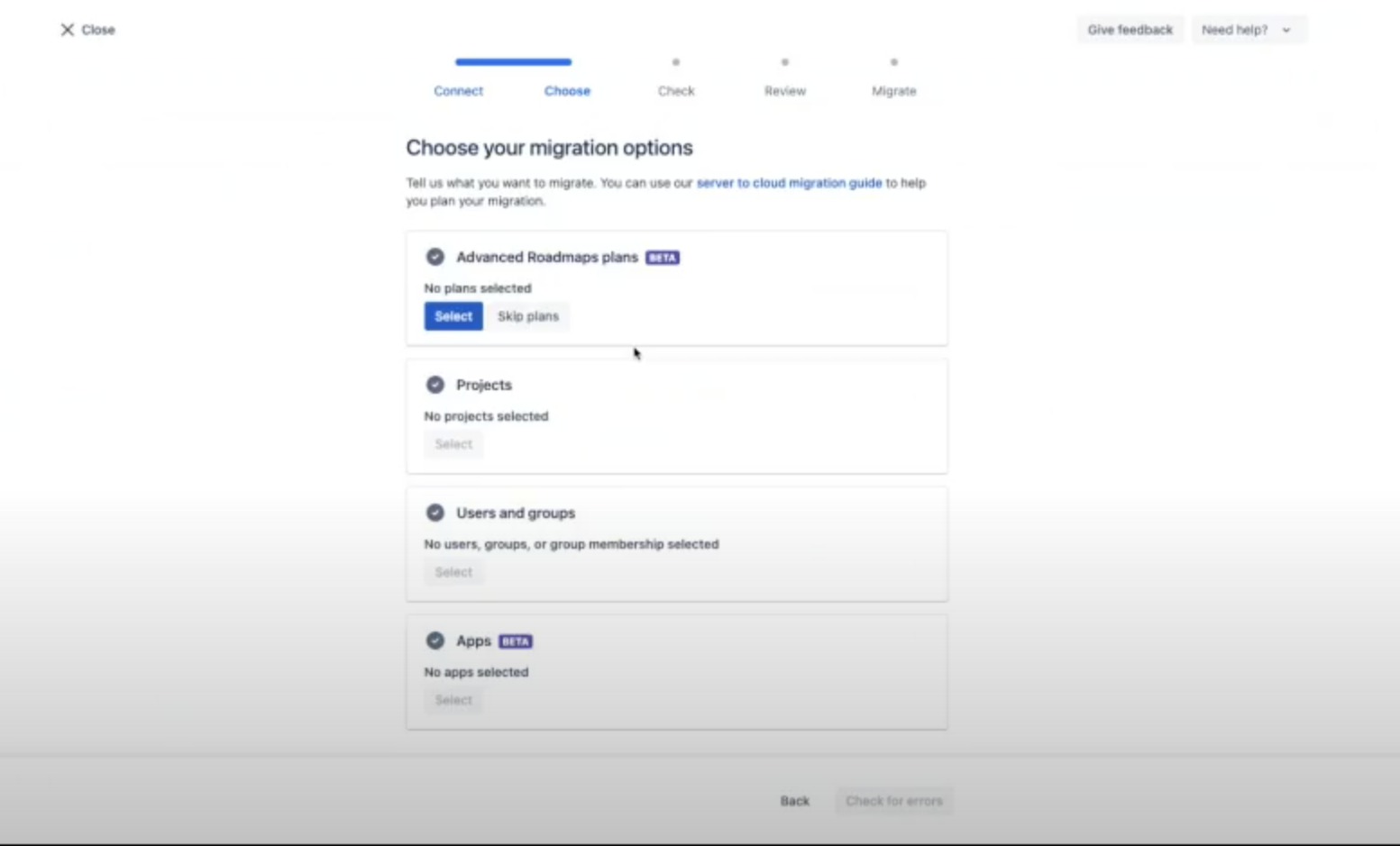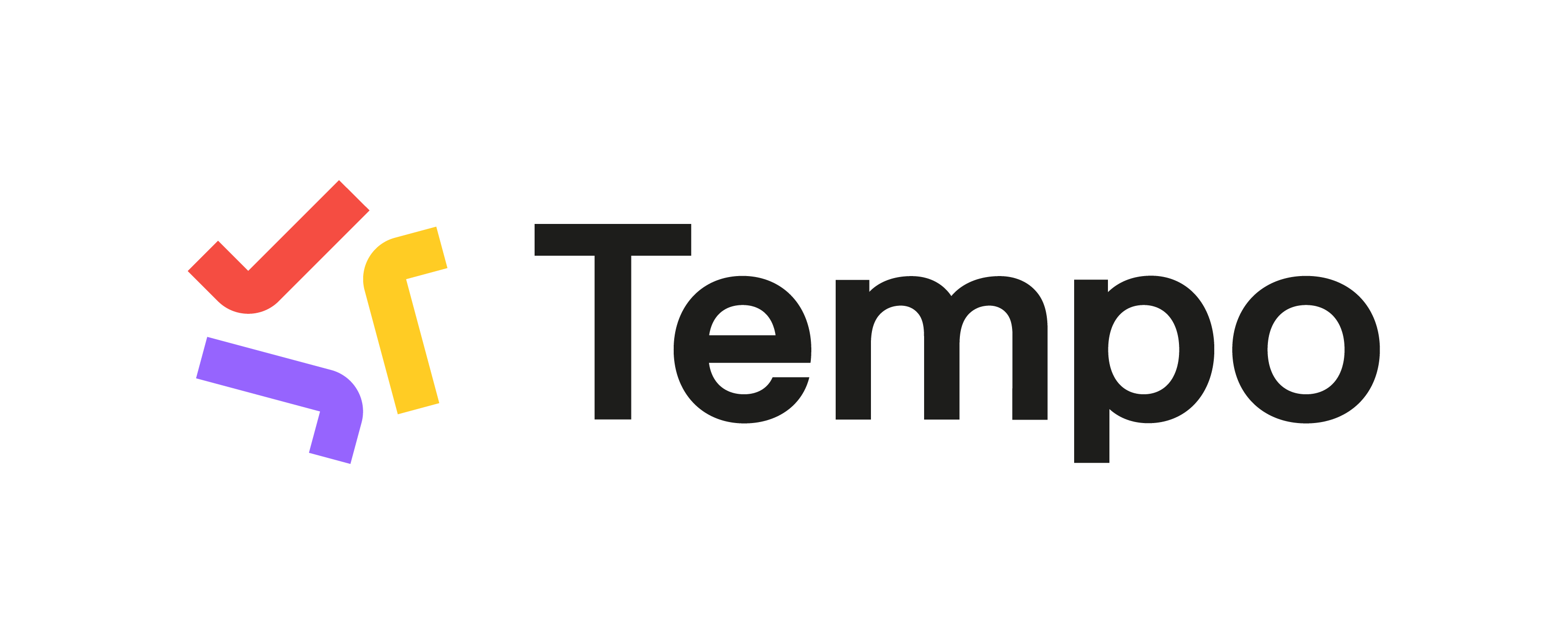Get Access to the Migration Assistant App
The first step is to obtain access to the Jira Cloud Migration Assistant App from the Atlassian Marketplace.
You should verify your licenses to see if you have the latest versions of Tempo and Jira installed. If the latest version of Tempo is not installed with the JCMA then the migration might encounter problems along the way.
Do the following necessary steps before starting the migration:
-
Upgrade to the latest version of Jira. See Tempo version compatibility.
-
Install the highest Tempo version compatible with the installed Jira version. See Tempo latest versions.
Make sure that you have the latest versions of Tempo software with the latest version of Jira installed. Upgrading is necessary to avoid any problems that might occur during migration.
Audit and Assess Your On-prem Apps
Atlassian recommends auditing your On-prem apps, including Tempo, and assessing your on-prem apps before using Jira Cloud Migration Assistant tool.

Install and Configure Tempo on Your Cloud Site
It is strongly recommended to install and to configure Tempo on your Cloud site before you attempt the migration. It's a necessary step to eliminate any possible risks that can be caused by your apps blocking your migration during the crucial migration steps.
Update the Worklogs with Missing Parameters
The DYNAMIC_DROPDOWN field type is not supported on the Cloud. Any attributes from a DYNAMIC_DROPDOWN field type for worklogs should be updated in your on-prem instance before migrating your data. For example, billed hours or worklog attributes.
Here are a few things to keep in mind when doing so:
-
The worklog attributes from the DYNAMIC_DROPDOWN field type must be converted to a static list field type (STATIC_LIST) values. The DYNAMIC_DROPDOWN type is not supported on Jira Cloud.
-
The values from the worklog attributes for each worklog are exported with the worklog servlet and the REST API as plain text/numeric values. However, when you have worklog attributes from the ACCOUNT type (Tempo Account field), the returned value is the Account Key in the Tempo database. The Account key can be set during the Account setup process but it cannot be edited afterwards.
-
If you have worklog attributes of the DYNAMIC_DROPDOWN field type, the returned value is the key. If the key is different from the provided name from the UI, you will need to match the key to the name.
Match Timezones
During the process of migration, please make sure your Cloud instance is using the same timezone as your on-prem instance; otherwise, you will see worklogs shifted forward/back by hours or even days.
If you have already performed your migration and notice your worklogs were shifted, please reach out to the Atlassian support team and request validation on the data on their end. Once the times are correct and fixed in Jira, please submit a Tempo Support request to have our team run the Timestamp Sync fix for your instance.
Connect Your Instance and Run the Migration App
Atlassian has a comprehensive documentation set about the steps you should follow once your access to the Cloud Migration Assistant app is enabled. Generally speaking, you are required to follow these key steps:
-
Connect to your destination Jira Cloud site
-
Choose your migration options:
-
Make sure that you select the Projects and the Tempo Apps they are associated with in order to be migrated together; otherwise, data will not be migrated correctly.
-
We recommend that you select the option to migrate all projects as well as all users and groups from the Jira directory.

-
-
Check for errors before you either save or run the migration
Monitor Your Migration Progress
Once you've initiated the migration, you can use Jira's Migration dashboard to monitor its progress. The dashboard indicates whether your migration projects are Saved, Running, Finished, Incomplete, or Failed.

Select View details to see detailed information about the progress of your migration project while it is running, from the migration dashboard and navigate to the logs and Reports tab. A progress report screen also shows the details of processing the migration.
Verify that Data Migrated as Intended
Once your migration is complete it is critical that you confirm that everything is migrated as intended. It is especially important that you confirm the migration of the Tempo data.
A key way to confirm that your worklogs are migrated is to go to Tempo's Logged Time Report:
-
If you have the proper permissions, then you should be able to see all worklogs there.
-
If you have the right permissions but you don't see your Tempo worklogs, then they may not be sync'ed yet from Jira to Tempo. Contact Tempo support team for Assistance.
-
If you have Work attributes that are configured, then verify that the migration is completed and worklogs are in place, then contact support to execute the migration of Work attributes.
Depending on the size of your organization, you may need to supplement your in-person verification of the remaining data with scripting, so you can verify the data at a larger scale.
If you are missing data during migration, then consult the Migration Steps. This can happen if you are using older versions of the software where some data might not migrate properly. You must contact Tempo support team for assistance.
For older versions, we recommend migrating your data manually. See Data Center to Cloud Manual Migration Guide .
Feedback and Support
One of the key goals is to get feedback on how the Migration Assistant App is working for you, particularly with regard to your Tempo data. Please contact Tempo support team with your comments and questions, and they will do their best to help you.
